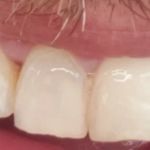How to Clean Teeth with Dental Tools: A Step-by-Step Guide
- 1. Why Use Dental Tools for Teeth Cleaning?
- 2. Essential Dental Tools for Cleaning Teeth
- 3. Step-by-Step Guide to Cleaning Teeth with Dental Tools
- 4. Common Mistakes to Avoid While Cleaning Teeth
- 5. Real-Life Experiences with Dental Tools
- 6. Why Choose Dentistry Toothtruth for Your Dental Care
1. Why Use Dental Tools for Teeth Cleaning?
Maintaining proper oral hygiene is essential for overall health, and using dental tools to clean your teeth can significantly enhance your ability to prevent plaque buildup, cavities, and gum disease. While regular brushing and flossing are crucial, dental tools offer a more thorough cleaning experience that reaches areas regular toothbrushes may miss. Using dental tools can help you achieve professional-level cleanliness from the comfort of your home.
Additionally, many dental tools are designed to target specific areas in your mouth, like between your teeth, under your gum line, and on your back teeth, where buildup tends to occur more frequently. This detailed cleaning process is important for individuals who are committed to excellent oral health and want to avoid costly trips to the dentist for cleanings.
2. Essential Dental Tools for Cleaning Teeth
There are several dental tools available that can assist with cleaning your teeth more effectively. Here are some of the most important tools you should consider using as part of your oral care routine:
2.1 Dental Scalers
A dental scaler is a small hand tool used to remove plaque and tartar buildup from the surface of your teeth. It’s particularly effective at cleaning the areas along the gumline, where plaque tends to accumulate and harden into tartar. While dental scalers are often used by professionals, they can be safely used at home with proper technique.
2.2 Dental Picks and Sticks
Dental picks and sticks are excellent for cleaning between your teeth, especially in areas where traditional floss might be difficult to reach. These tools are designed to gently remove debris and plaque from the tight spaces between your teeth, promoting better gum health and preventing tooth decay.
2.3 Electric Toothbrushes
While not exactly a manual dental tool, electric toothbrushes can make cleaning your teeth more effective due to their automated brushing motions. Many electric toothbrushes come with specific settings to target plaque removal and gum health. They are particularly helpful for individuals with mobility issues or those looking for a more convenient way to clean their teeth thoroughly.
2.4 Interdental Brushes
Interdental brushes are small, cone-shaped brushes designed to fit between teeth, making them perfect for cleaning hard-to-reach spots that floss might miss. These brushes are ideal for people with larger gaps between their teeth or those with dental appliances such as braces.
3. Step-by-Step Guide to Cleaning Teeth with Dental Tools
Properly cleaning your teeth with dental tools can be a game-changer in maintaining optimal oral health. Follow this step-by-step guide to clean your teeth thoroughly using the right tools:
3.1 Step 1: Start with Brushing
Begin by brushing your teeth with a fluoride toothpaste using a toothbrush. This will help remove surface plaque and bacteria from the outer surfaces of your teeth. Brushing should last for at least two minutes, ensuring that all areas of your mouth are covered.
3.2 Step 2: Use a Dental Scaler
After brushing, use a dental scaler to gently scrape off any remaining plaque or tartar buildup along your gumline. Hold the scaler at a slight angle and carefully work along the edges of your teeth. Be gentle, as applying too much pressure can damage your gums or teeth.
3.3 Step 3: Clean Between Your Teeth with Dental Picks or Sticks
Next, use a dental pick or stick to clean between your teeth. These tools are especially useful for individuals with tight spaces between their teeth. Gently insert the pick or stick between the teeth to remove any food particles or plaque.
3.4 Step 4: Floss Your Teeth
After cleaning between your teeth with a pick or stick, floss thoroughly. Flossing helps remove any leftover debris and plaque that may have been missed by the other tools. Be sure to use proper technique, sliding the floss up and down along each tooth to avoid damaging the gum tissue.
3.5 Step 5: Finish with Mouthwash
Rinse your mouth with an antimicrobial mouthwash to help kill any remaining bacteria and freshen your breath. This will also help reduce the risk of gum disease and further plaque buildup.
4. Common Mistakes to Avoid While Cleaning Teeth
When using dental tools at home, it’s important to avoid certain mistakes that could potentially harm your teeth or gums. Here are a few common pitfalls to watch out for:
4.1 Using Too Much Force
It’s easy to assume that applying more force will lead to better cleaning, but this can actually cause harm. Overusing pressure when using a dental scaler or pick can damage your gums and tooth enamel. Always use gentle, controlled movements to clean your teeth.
4.2 Neglecting the Gums
While it’s important to focus on cleaning the surface of your teeth, don’t neglect your gums. Gently clean along the gumline to remove plaque and prevent gum disease. Regular flossing and using an interdental brush can also help maintain gum health.
4.3 Not Using the Right Tools for the Job
Using the wrong dental tools can lead to ineffective cleaning or injury. For example, using a dental scaler on very sensitive teeth or gums may cause discomfort. Make sure you’re using the appropriate tools for your specific needs and always follow the instructions provided with the tools.
5. Real-Life Experiences with Dental Tools
Many people have successfully improved their oral health by incorporating dental tools into their daily routines. Take for example, Emily, who struggled with persistent plaque buildup. After incorporating a dental scaler and interdental brush into her routine, she noticed a significant improvement in both her oral health and the appearance of her smile. “I can’t believe the difference,” Emily said. “My dentist even commented on how much cleaner my teeth are now.”
Similarly, John, who has sensitive gums, found that using a gentle dental pick helped him clean between his teeth without irritating his gums. “I’ve been using a dental pick for months now, and my gums feel healthier than ever,” he shared. “It’s an easy addition to my oral care routine.”
6. Why Choose Dentistry Toothtruth for Your Dental Care
If you want to ensure your teeth and gums stay healthy, consider visiting Dentistry Toothtruth for expert advice and professional care. At Dentistry Toothtruth, we offer the latest dental tools and guidance on maintaining optimal oral health. Our team of professionals can recommend the best products and routines for your unique needs, ensuring a clean and healthy smile for years to come.
Visit Dentistry Toothtruth today to learn more about how dental tools can help improve your oral hygiene and get expert tips for maintaining a bright, healthy smile.







 Schooley Dental0.0 (0 review)
Schooley Dental0.0 (0 review) Maui Whitening Orlando4.0 (32 review)
Maui Whitening Orlando4.0 (32 review) Dr. Jack Sabol3.0 (3 review)
Dr. Jack Sabol3.0 (3 review) Puntillo and Crane Orthodontics4.0 (339 review)
Puntillo and Crane Orthodontics4.0 (339 review) Destination Dental Care4.0 (102 review)
Destination Dental Care4.0 (102 review) Toothbeary Pediatric Dentistry4.0 (101 review)
Toothbeary Pediatric Dentistry4.0 (101 review) The Importance of Oral Health Education During Pregnancy for a Healthy Pregnancy
The Importance of Oral Health Education During Pregnancy for a Healthy Pregnancy Best Tips for Brushing Your Teeth Properly for Healthy Gums: Essential Techniques for Oral Health
Best Tips for Brushing Your Teeth Properly for Healthy Gums: Essential Techniques for Oral Health Why Skipping Dental Checkups Can Lead to Bigger Oral Health Problems
Why Skipping Dental Checkups Can Lead to Bigger Oral Health Problems Advantages of Porcelain Dental Restorations
Advantages of Porcelain Dental Restorations How Can Diabetes Cause Tooth and Gum Problems? Preventing and Managing Oral Health Issues
How Can Diabetes Cause Tooth and Gum Problems? Preventing and Managing Oral Health Issues Healthy Habits for Promoting Good Oral Health and Hygiene: Tips for a Healthy Smile
Healthy Habits for Promoting Good Oral Health and Hygiene: Tips for a Healthy Smile